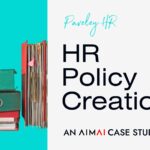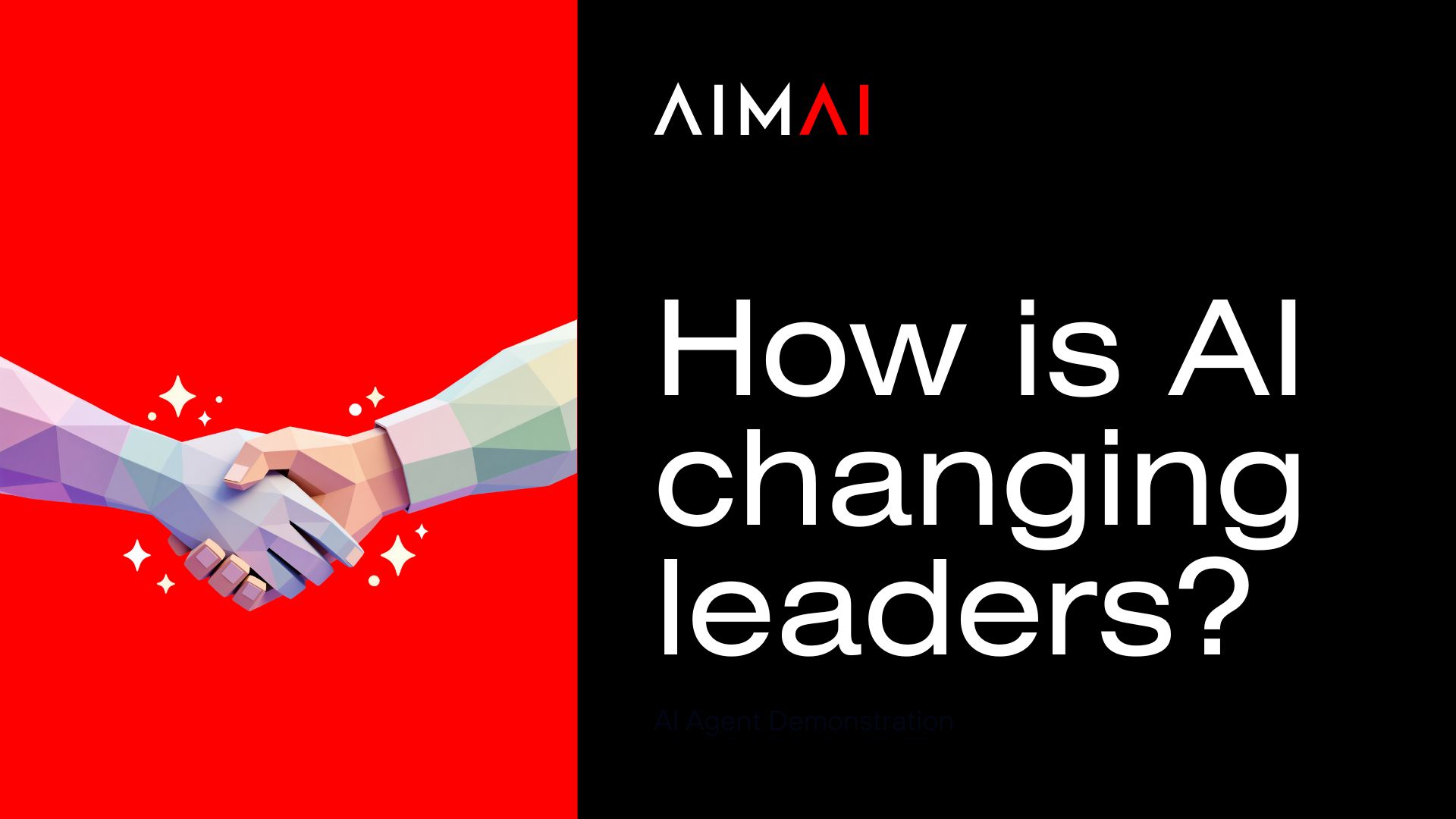Smarter Tools, Shifting Culture: How AI is Sharpening Workforce
I. Introduction: What We Are Seeing at the Sharp End
We’re entering a transformative moment in the way work gets done—not at the strategic summit, but at the operational edge. AI-powered toolsets are no longer experimental or reserved for technical specialists; they are rapidly becoming essential, intuitive parts of everyday workflows across the business.
This shift is being felt most clearly where work happens fastest—on the frontlines of customer service, design, sales, operations, and analysis. Tools that once demanded expert knowledge or weeks of onboarding now offer immediate value, tailored to the context of the user. They reduce friction, automate the mundane, and elevate human decision-making. In doing so, they’re not just enhancing productivity—they’re changing the experience of work itself.
At AIMAI, we see this not just as an operational upgrade, but as a cultural one. Smarter tools are giving rise to more motivated, more capable, and more autonomous teams. But they’re also challenging traditional models of leadership and coordination. Intelligence is no longer top-down; it’s moving upstream from every part of the organisation.
And that changes everything…
II. The Big Pill Just Got Smaller: Tools That Fit the Task: Granular, Useful, and Ready to Use
In the past, workplace tools were often blunt instruments—designed for broad functions but rarely aligned with the specific tasks people actually performed. They were built for departments, not individuals; for processes, not moments. As a result, adoption was slow, forced, and often incomplete.
That’s changed—dramatically.
Today’s AI-powered tools are increasingly fine-tuned to support specific, granular tasks: summarising a meeting, drafting a response, analysing a dataset, prioritising next steps. This shift from broad functionality to precise, task-level utility is a game-changer. Tools are no longer just “fit for purpose”—they’re fit for your purpose.
And that’s why they’re being adopted so easily.
When a tool helps someone with exactly what they need to do—right now, without setup, without training—resistance evaporates. The barrier to entry drops to almost nothing. It doesn’t feel like change management; it feels like common sense.
This new level of contextual intelligence is what’s driving a quiet revolution in adoption. The tools don’t just work—they work for you, right where you are.
III. The Me Tool Movement: Tools That Serve the User First: Business Value as a By-Product
The traditional logic of workplace tools has always followed a clear hierarchy: implement systems that serve the business, and ask the user to adapt. The assumption was that short-term friction for employees would result in long-term organisational gain. Users were expected to tolerate the pain—for the greater good.
That logic has been flipped.
With AI-powered toolsets, the primary beneficiary is now the user. These tools are built to serve individual workflows first—offering instant support, insight, or acceleration with minimal effort. The benefit to the business is no longer the justification for adoption; it’s the by-product of empowered, satisfied, and high-performing users.
This marks a cultural turning point. For the first time, frontline employees are experiencing tools that feel like they were designed for them, not for management. Whether it’s an AI assistant writing a first draft, a summariser cutting through information overload, or a tool that automates a tedious process, the outcome is clear: life gets easier—for the person doing the work.
That ease and immediacy change everything. Resistance fades. Onboarding becomes intuitive. Users become advocates. And critically, productivity improves not because it’s enforced, but because it’s experienced.
In this new model, business benefit follows personal utility—not the other way around. For the employee, it feels good – and it’s a bit moreish…
IV. The Down Size of Accessible Addiction
The rapid uptake of AI tools is undeniably exciting. Adoption is no longer limited to digital champions or curious innovators—it’s happening across functions, roles, and seniority levels. This is the result of a core shift: tools are now intuitive, granular, and immediately rewarding to use.
But that very accessibility brings a new challenge.
As tools become easier—and even enjoyable—to use, they also become more addictive. People are drawn to them not just for efficiency, but for the sense of autonomy and empowerment they provide. In many ways, this is the cultural promise of AI at work: people feeling smarter, faster, and more effective.
However, without clear coordination, that same empowerment can lead to misalignment. Individuals may head off in directions that feel valuable to them but aren’t strategically coherent. They may optimise for local gains, explore tangents, or even automate away controls—unintentionally creating silos, duplication, or drift.
In short: we risk replacing inertia with divergence.
This is not a reason to slow adoption—but it is a call to recognise a new organisational dynamic. Widespread capability needs to be paired with shared direction. Without that, we don’t get a smarter workforce—we get a scattered one.
Which brings us to the new mandate for leadership…
V. Intelligence Is Flowing Upstream
Traditionally, decision-making flowed top-down. Leadership gathered information, made sense of it, and cascaded instructions down the organisation. Frontline teams executed. Insight was assumed to reside at the centre, while the edges carried it out.
That hierarchy no longer holds.
As smart tools become embedded in day-to-day workflows, intelligence is being generated and applied directly at the coal face. A customer service rep now has access to real-time data synthesis. A project manager can automate prioritisation and surface insights in moments. Analysts, marketers, salespeople—everyone is working with more context, faster feedback loops, and machine-augmented reasoning.
This shift means valuable insight is no longer pooled at the top—it’s distributed, and it’s immediate. Intelligence is flowing upstream.
That presents a huge opportunity, but also a strategic challenge. With capable individuals making higher-quality decisions on the fly, the traditional function of management—directing every move—becomes obsolete. Instead, leadership must focus on enabling and integrating the intelligence that’s emerging throughout the organisation.
In essence, the coal face is becoming a strategic asset. But only if its signals are heard, aligned, and acted on.
This is the next chapter of organisational evolution: not just smarter tools, but smarter systems—where intelligence isn’t centralised, but connected.
VI. Leadership Reimagined: From Control to Coordination
When adoption is easy and intelligence is everywhere, the role of leadership becomes both more complex and more critical.
The reality is clear: frontline teams are now equipped to move faster, decide smarter, and act more independently than ever before. Insight that once lived at the top now emerges from every corner of the organisation. AI tools have not only changed how work is done—they’ve changed where intelligence resides.
For leaders, this presents a choice: evolve or become the bottleneck.
Those clinging to traditional, top-down control will find themselves outpaced by their own teams. The work will keep moving—with or without them. But leaders who recognise this shift—who embrace their new role as enablers of flow, clarity, and coherence—will unlock something powerful.
This is no longer about overseeing performance. It’s about ensuring alignment across a landscape of distributed capability. It’s about guiding momentum, not controlling it.
The organisations that thrive in this new era won’t be the ones with the smartest execs—they’ll be the ones with the best-connected systems of intelligence, fuelled from the ground up and harmonised from the centre.
VII. Intelligence Is Rising. But Is Wisdom Keeping Up
There’s no longer any serious debate: individuals who adopt AI tools will become more capable. Even if the technology stopped improving tomorrow (which it won’t), the users would still grow sharper—more efficient, better informed, and faster at turning insight into action. The tools themselves are doing what great tools should do: they’re making people smarter.
So yes, this is an adapt-or-die moment for individuals. Those who ignore this shift will be left behind—professionally and cognitively.
But the more interesting—and more complex—question isn’t about individual capability. It’s about collective intelligence. What happens when everyone gets smarter on their own terms? Do organisations get wiser as a result? Not necessarily.
Because while AI enhances what individuals can do, it doesn’t guarantee that groups stay aligned, connected, or informed. Tools don’t replace shared context, dialogue, or human judgment at scale. In fact, they can just as easily amplify misalignment—enabling highly capable people to pull in different directions, each feeling completely justified in their course.
So we’re entering a phase where there may be more intelligence in the room than ever—but whether there’s wisdom in the crowd remains an open question.
That’s why culture, communication, and leadership still matter. AI tools raise the floor of capability, but it’s still up to humans to build the ceiling of collective understanding.
VIII. Conclusion: Cultural Shifts, Intelligent Tension
We’re not just witnessing a technological evolution—we’re navigating a cultural one. As AI toolsets become more embedded in the workplace, they’re transforming how individuals operate, how teams behave, and how organisations function. The result is a more motivated, more capable, and more autonomous workforce.
But that empowerment introduces a new kind of tension.
The workplace is getting smarter at the edges. People are moving faster, deciding better, and feeling more in control. This breeds energy, momentum, and confidence. But without strong alignment, shared context, and leadership that embraces coordination over control, that same energy can become fragmented.
The danger is no longer resistance to change—it’s everyone changing in different directions.
We may end up with a room full of intelligent actors, each equipped with powerful tools, but lacking the cohesion that turns intelligence into wisdom. Whether that becomes a cultural high point or a period of growing dissonance will depend on the choices organisations make now.
The organisations that thrive will be those that not only adopt the tools, but align the people. That recognise AI as a cultural force as much as a technical one. That build not just smarter teams, but wiser ones.


